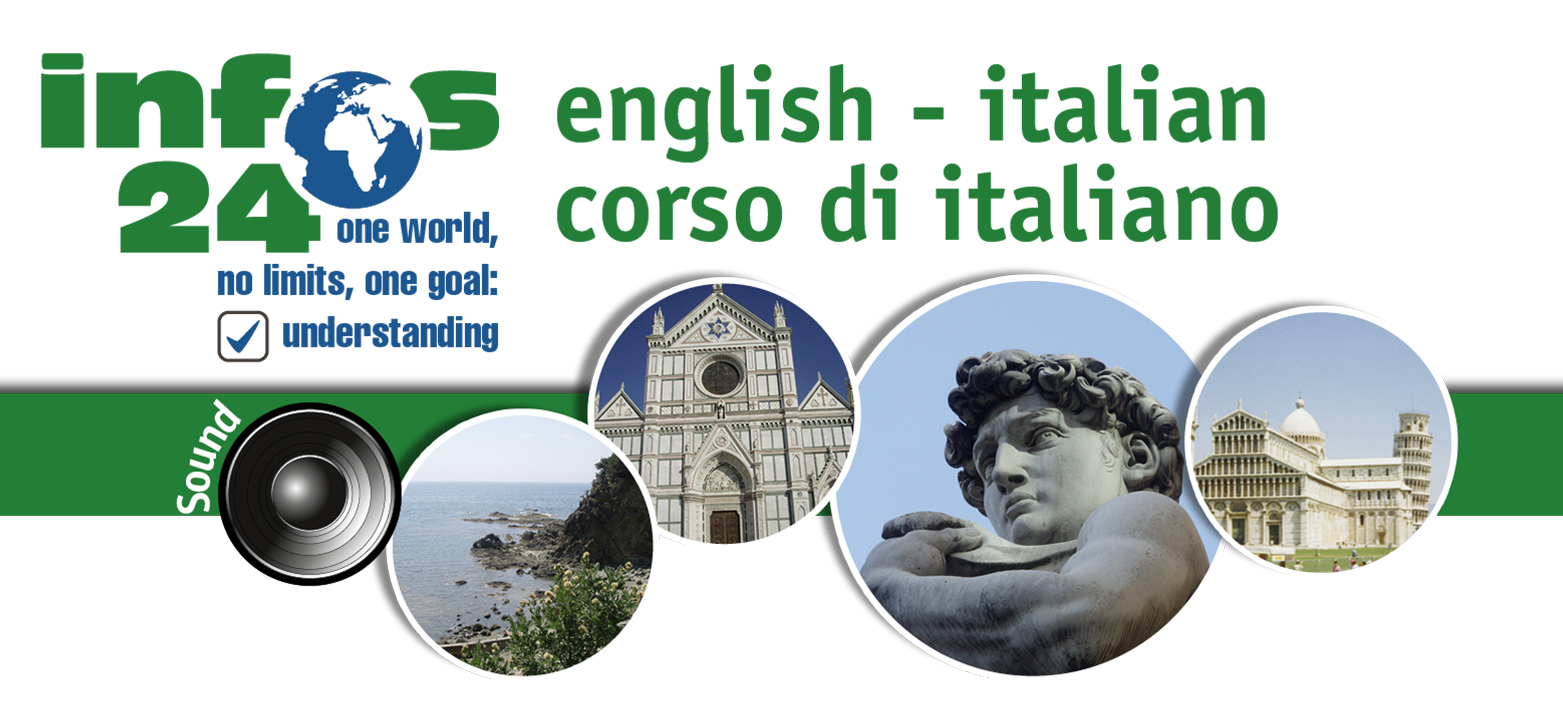
| 1 Introduction |
To hear the sound samples you have to click twice if you use the internet explorer. Once the file loaded, one click is enough.
Italian is a Roman language like French, Spanish, Portuguese, Catalan, Romanian etc. which all derive from Latin. From a grammatical point of view Italian is between French and Spanish. If you speak French you will find a lot of things - for example the partitive article (which doesn't exist in Spanish) - which are already familiar to you. And if you speak Spanish you are going to find things like the rolling r, difficult to produce for some of us. We are going to talk about that later. But all the Roman languages have a lot of things in common, for instance the distinction between events that really happen and events which are just feared, hoped, ordered, desired or in other ways imagined; the gerund (which exists in English as well, but is not used in exactly the same way), a tense system differing from the English one, etc. etc. Therefore, you are going to learn a lot of things about Spanish and French as well without any extra effort. We are going to discuss in this grammar about the similarities between these languages as well as about the differences. Apart from that, you have in front of your nose something called contrastive grammar. That means that we are going to compare the English grammar with the Italian grammar. Therefore, some explanations are a little bit long. The idea behind is quite simple. Sometimes it is more useful to understand the background of a problem instead of just learning just a few mnemonic sentences. Where it is necessary, you are going to find a summary at the end of the chapter.
We recommend you not to spend more than 160 hours with that grammar, drop the things you don't understand, but try to understand the sentences given as an example (the meaning) and hear them several times by clicking on the loudspeaker symbol. After having read a chapter, download the sound file of this chapter. You can download them as a zip from the table of content page and hear them several times, while jogging, cleaning the dishes, whatever. The grammar will help you find a structure in the chaos so that the words and sentences will not zoom past your ear anymore like a waterfall. If you see a structure in the chaos you will have a passive understanding (hearing / reading) of the language. Having reached that level, you will soon be able to use the structure you know passively also actively (speaking / writing). What we want to say is: You need a global vision of the whole system, the whole grammar because in real live, if you listen to a native speaker, you are always confronted with the whole system, but at the beginning it is not necessary that you dominate the whole system perfectly, talking and writing, it's enough that you understand what people say. A lot of courses online, on CD, books, etc., promise you that it is possible to learn a language without any grammar at all. We say that is not going to work, the only thing you learn with this kind of course are vocabulary and basic sentences, enough perhaps to order a cappuccino, something you can do as well in English. However, to master more complex situations you need a little bit of grammar. We will try to approach this dry topic with some humour and some catching examples, and in no time you are fluent
That shall be enough for introduction. Let' s start.
| contact privacy statement imprint |